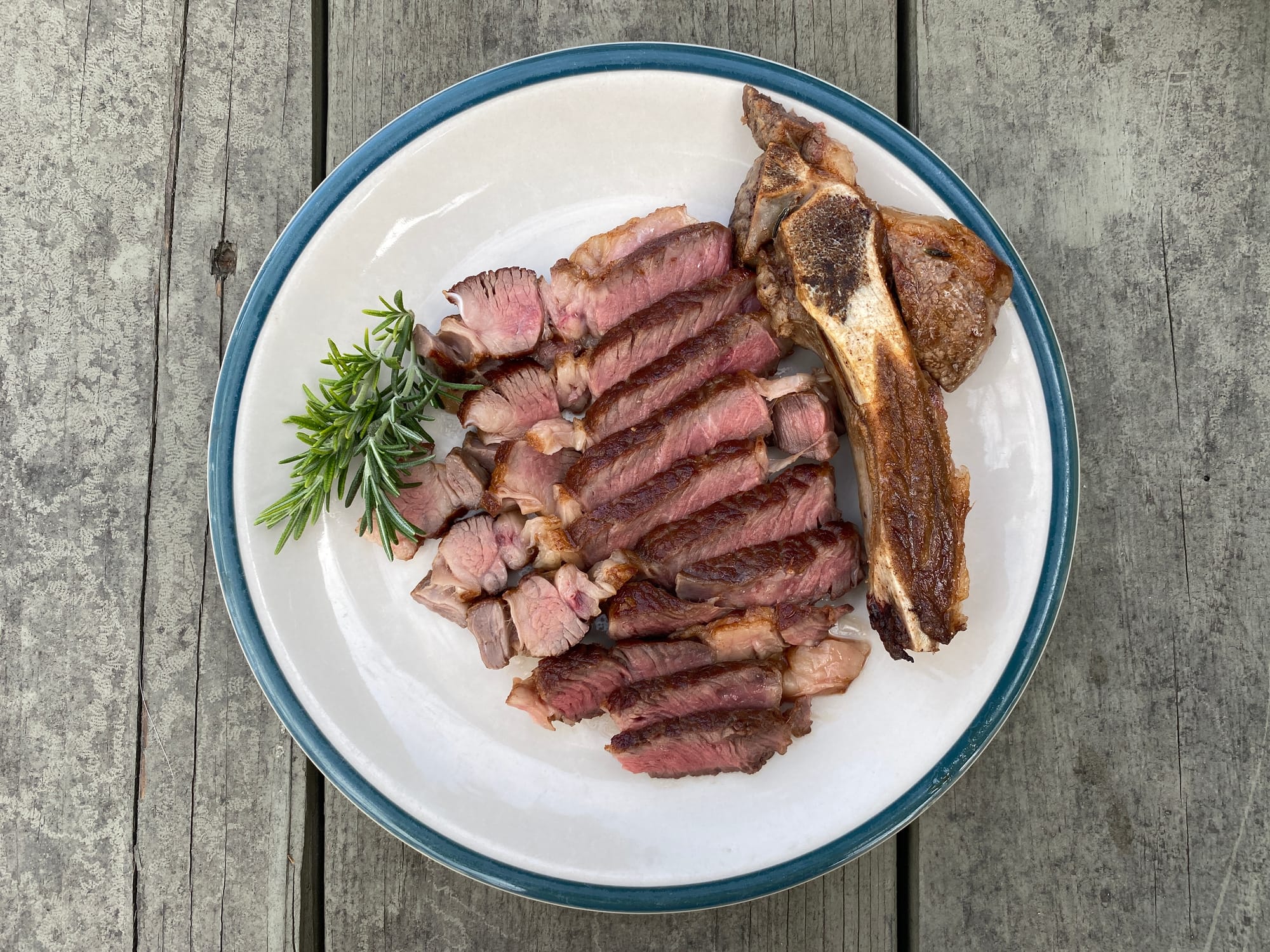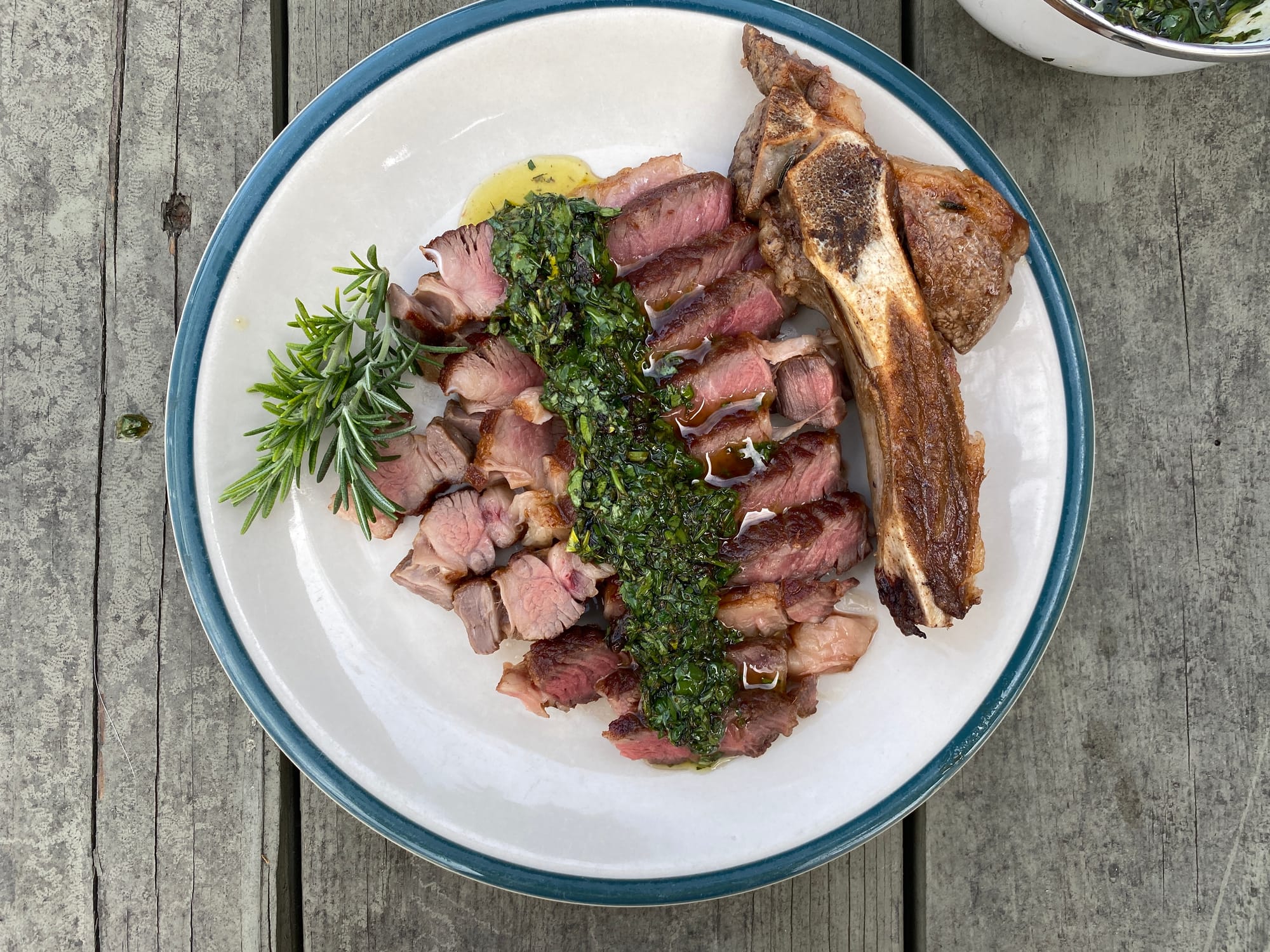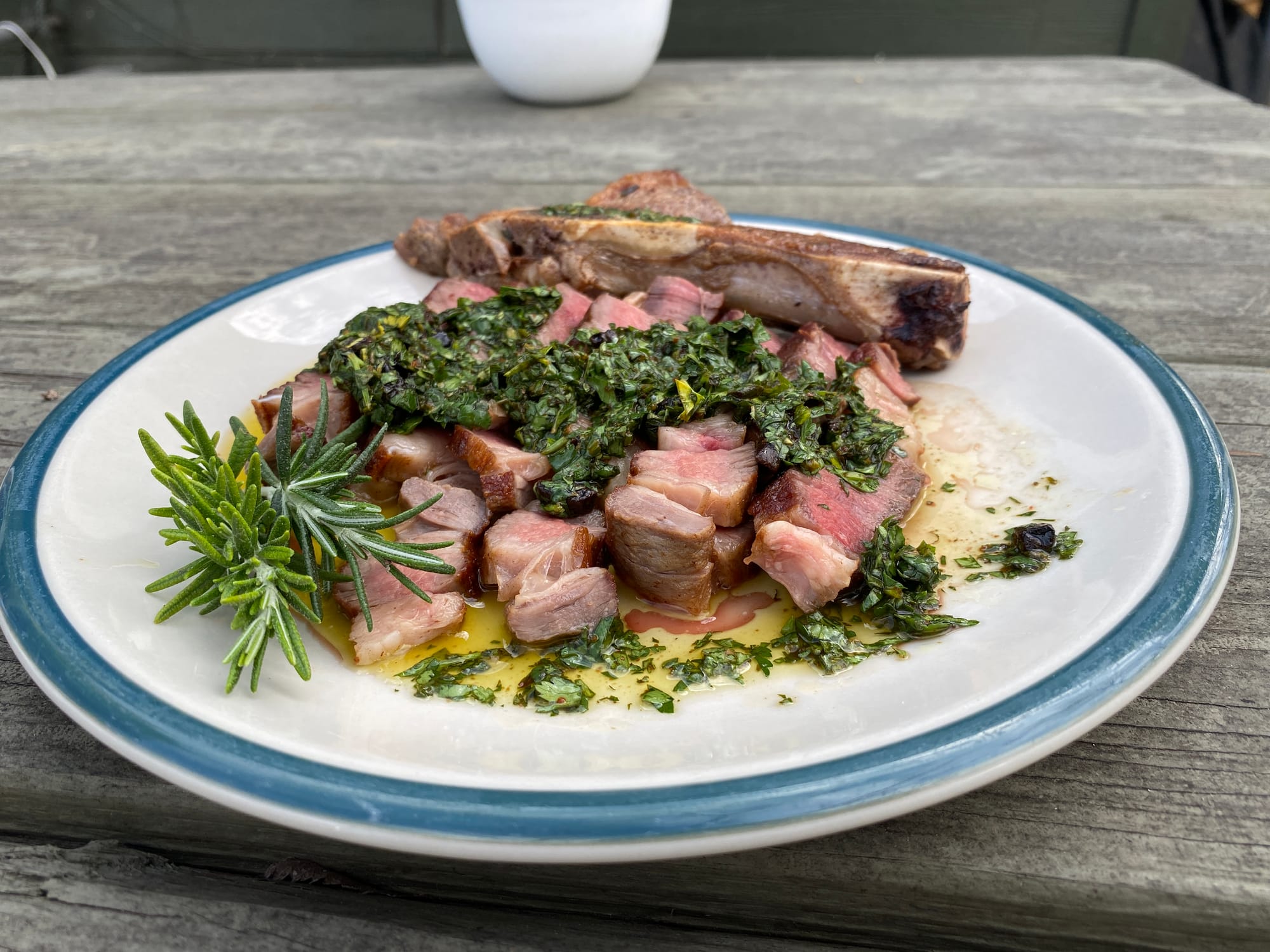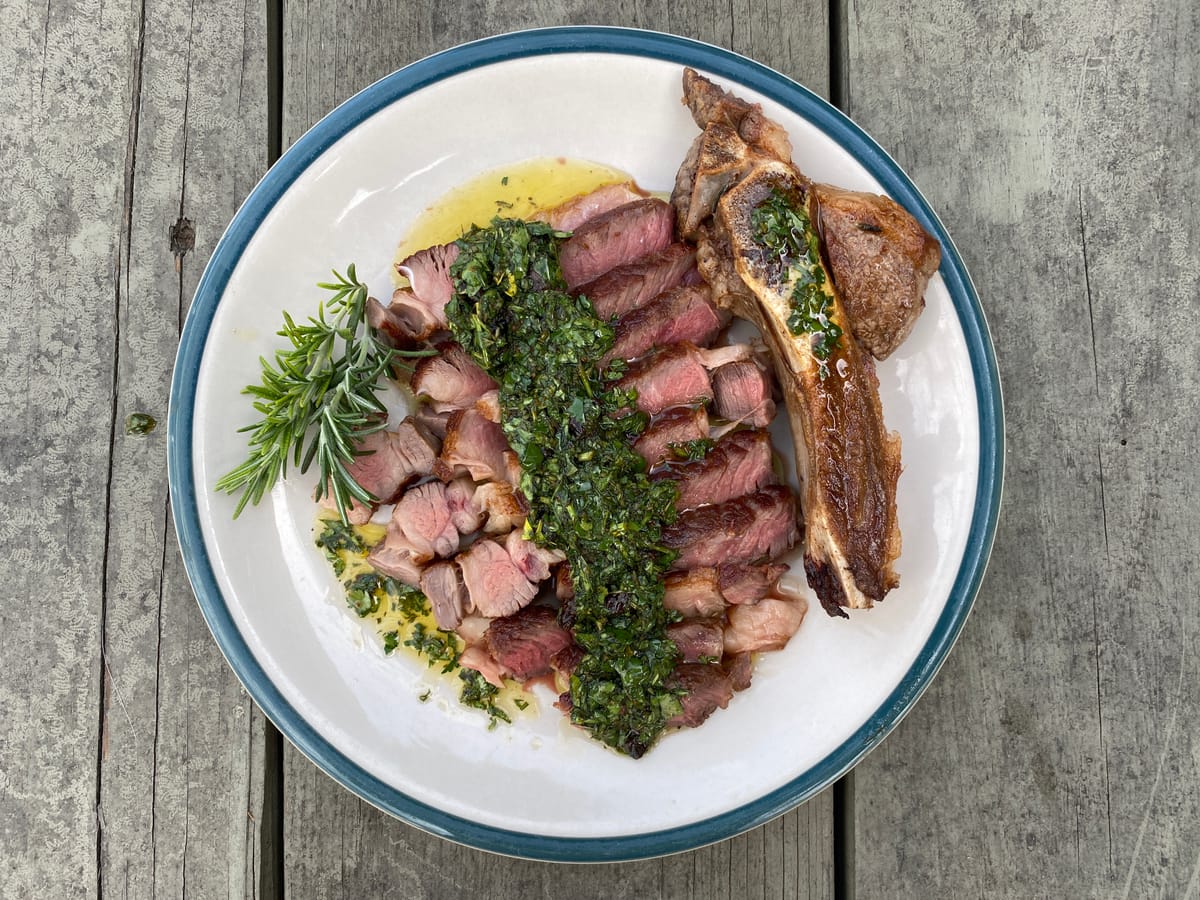Notes
There are two primary methods I use for cooking steak. The first is the reverse sear, which I use when I'm cooking a really thick cut. The second is this one, which I use any time I'm cooking a thinner steak cut that I want to finish entirely in the pan.
Here I start by searing the steak on both sides, and then I baste it in butter (flavored with some aromatics) to finish the cooking process. This method is amazing and worth having in your back pocket.
I like to serve this with black garlic chimichurri or this spicy herb lime sauce.
Ingredients
- 1 ribeye
- 2 tbsp beef tallow or ghee
- 3-4 tbsp grass-fed butter
- 3-4 cloves of garlic, peeled and slightly crushed with the side of a knife
- 3 sprigs of rosemary
- salt
Process
Start by dry-brining your steak, if you have time.
Generously salt the steak on all sides. Place it on a sheet tray with a wire rack and put it into the fridge for 12-24 hours.
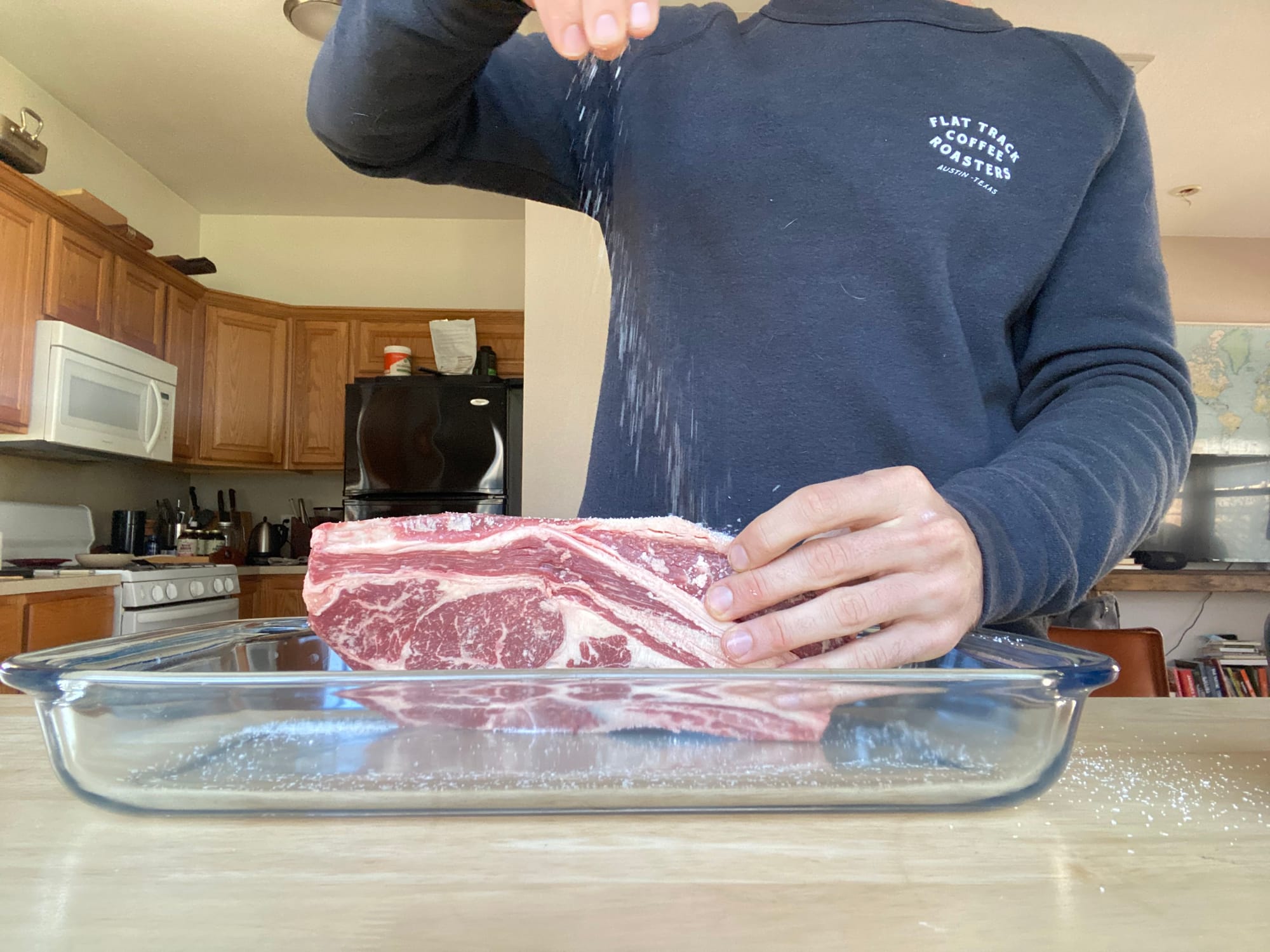
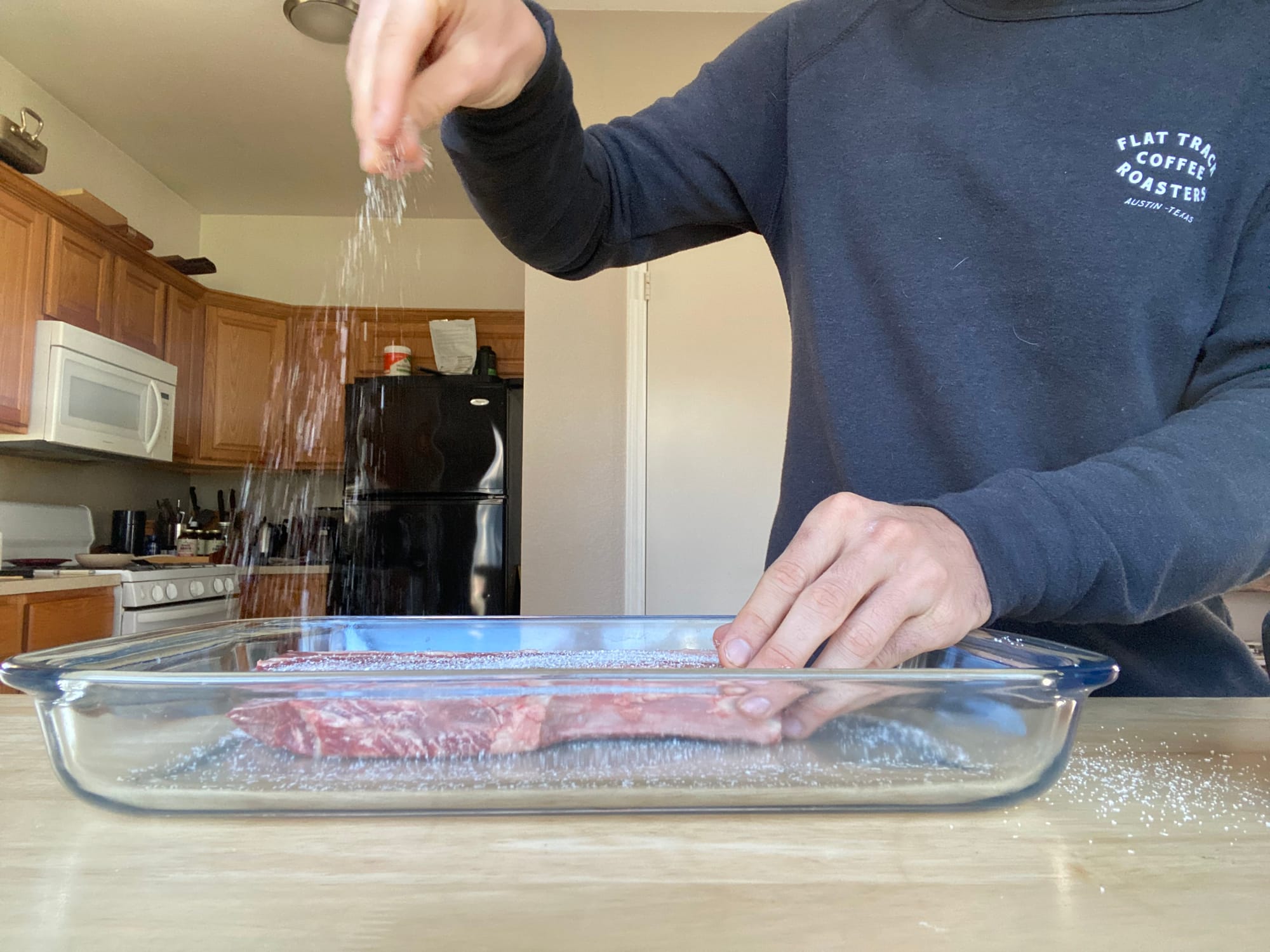
This is best done one day ahead, but it's worth doing even just an hour ahead of cooking. In that case you don't need to put it in the fridge. If you don't have time to dry brine, just salt your steak right before you cook it.
Pull the steak from the fridge 30 minutes before you plan to cook it.
Place a cast iron, carbon steel, or stainless steel pan on your stove over high heat.
Lightly pat the steak dry with a paper towel to remove any excess moisture.
Add your tallow or ghee to the pan and melt it– it should be just shy of smoking.
Place your steak into the pan and sear it on the first side.
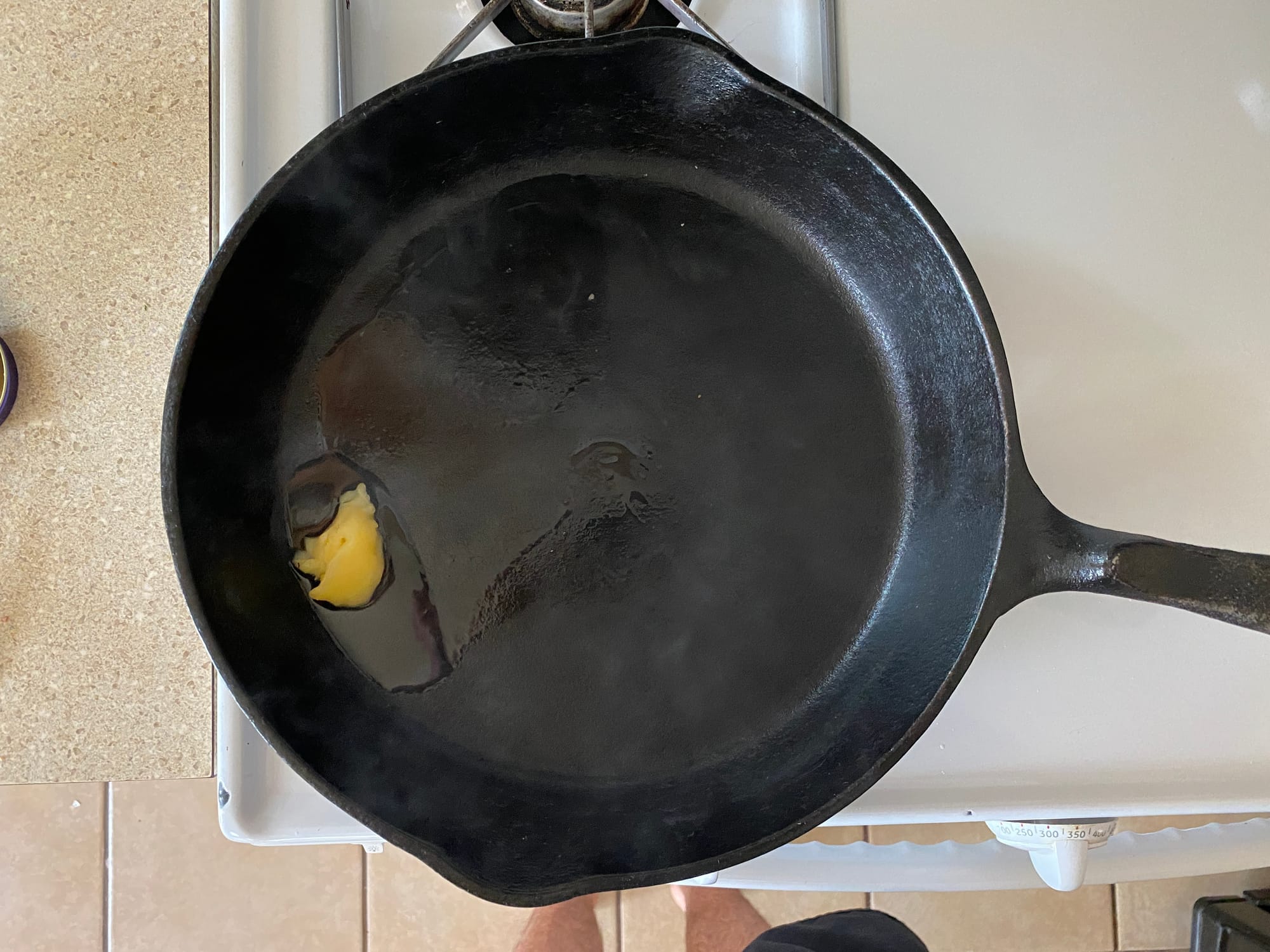
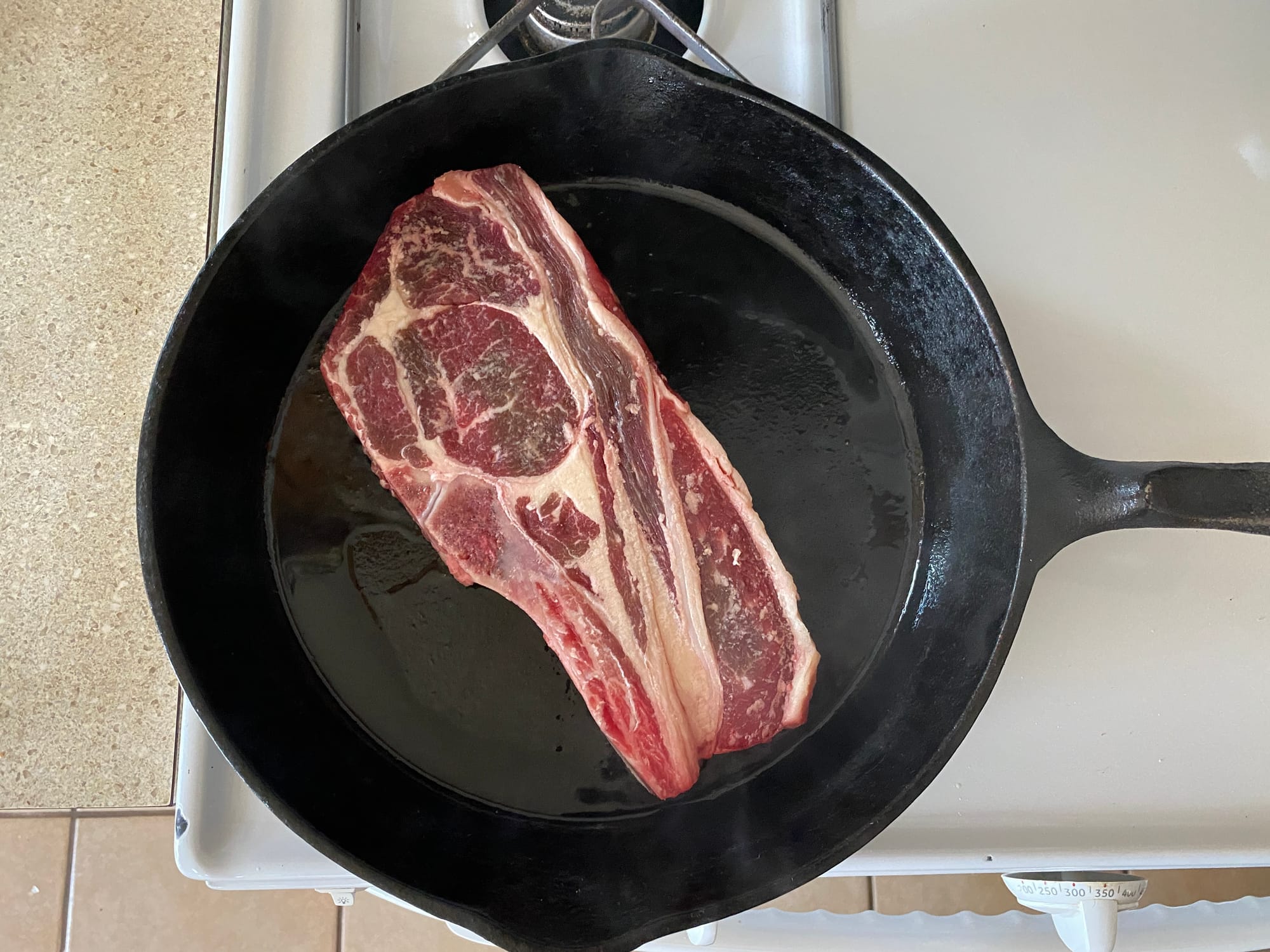
After a minute or two, you should have a beautiful brown crust on the first side. Once you do, flip it and cook the other side.
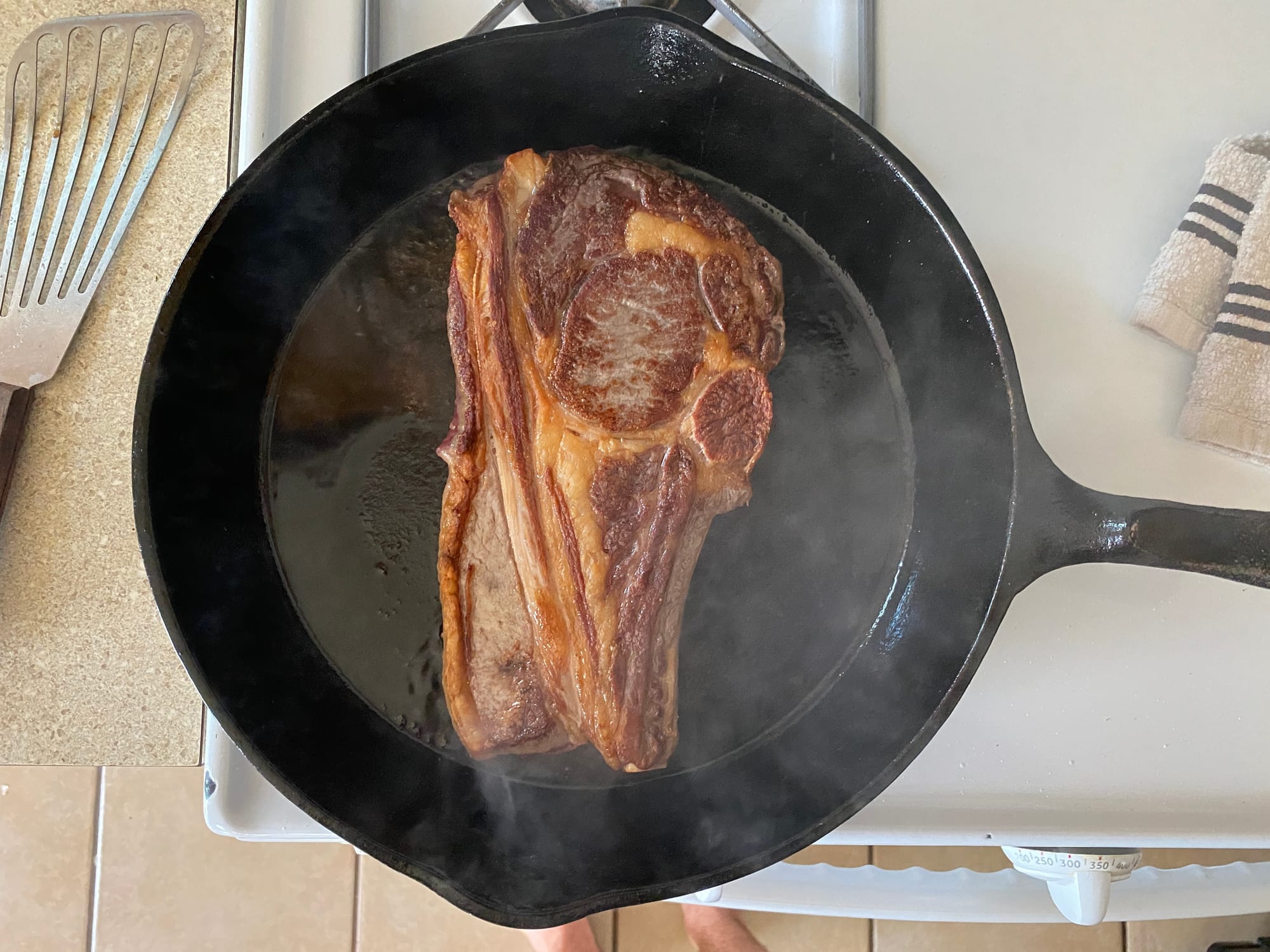
Once both sides are seared, turn the heat down to medium. Add in your butter– it will start to melt immediately.
Throw the garlic and rosemary on top of the butter. Use the handle of the pan to angle it slightly towards you, pooling the melted butter.
Using your largest spoon, scoop up the liquid butter and drizzle it over the steak, covering as much surface area as possible. Flip the steak every 30 seconds or so as you do this.
During this part of the process, you'll have to manage your heat. If the butter looks like it's starting to burn, pull the pan from the heat briefly and turn it lower to prevent burning.
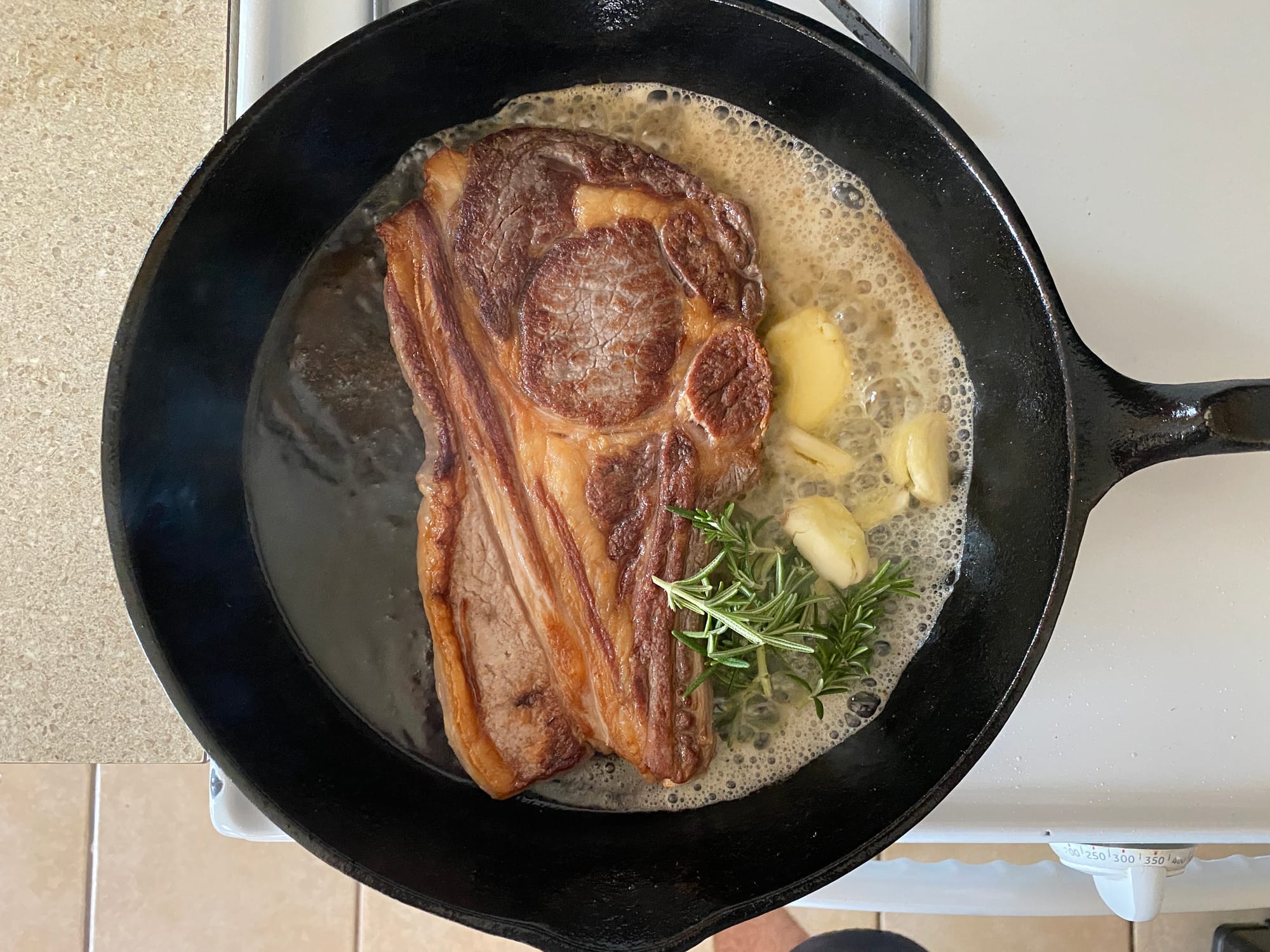
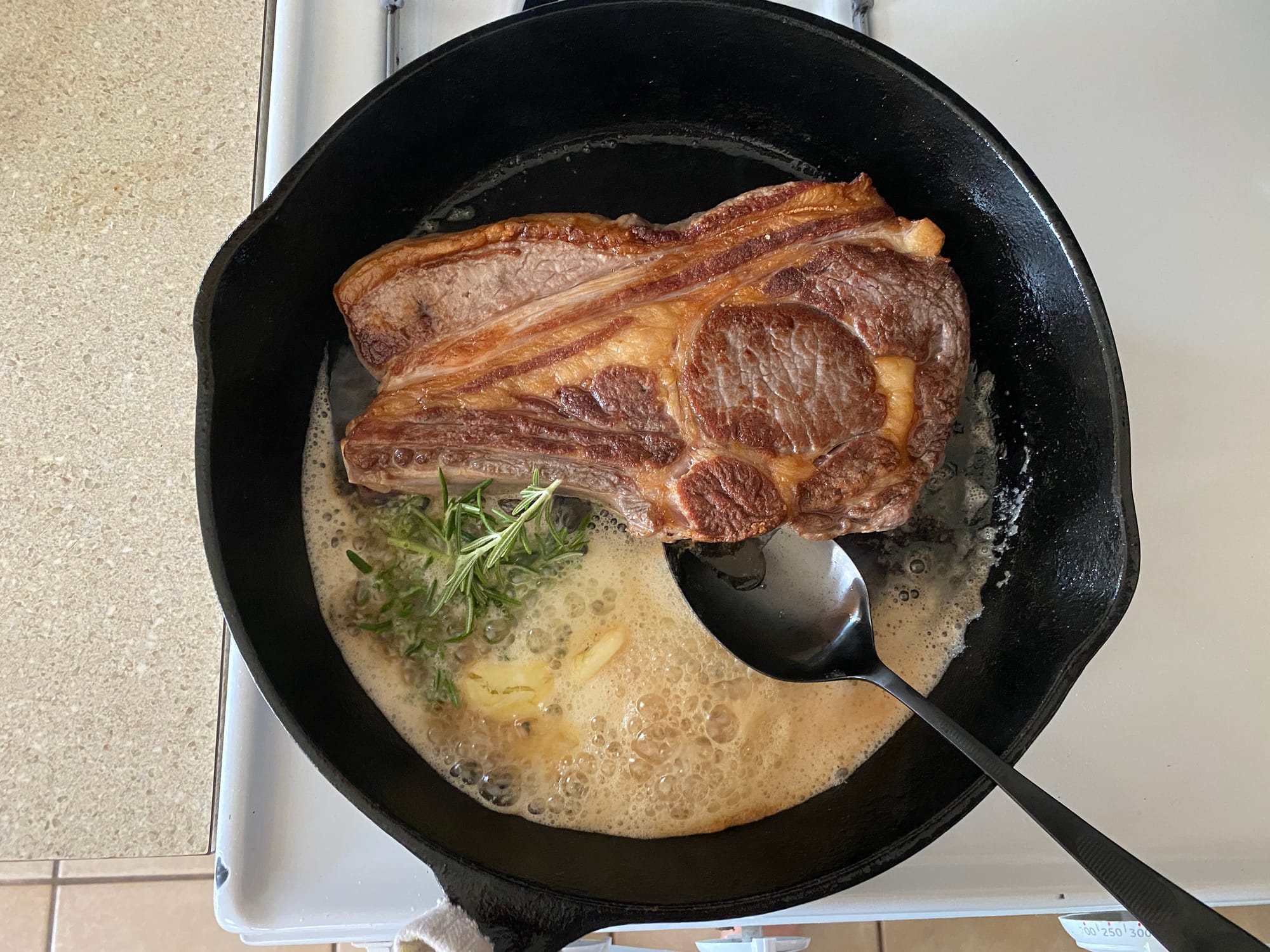
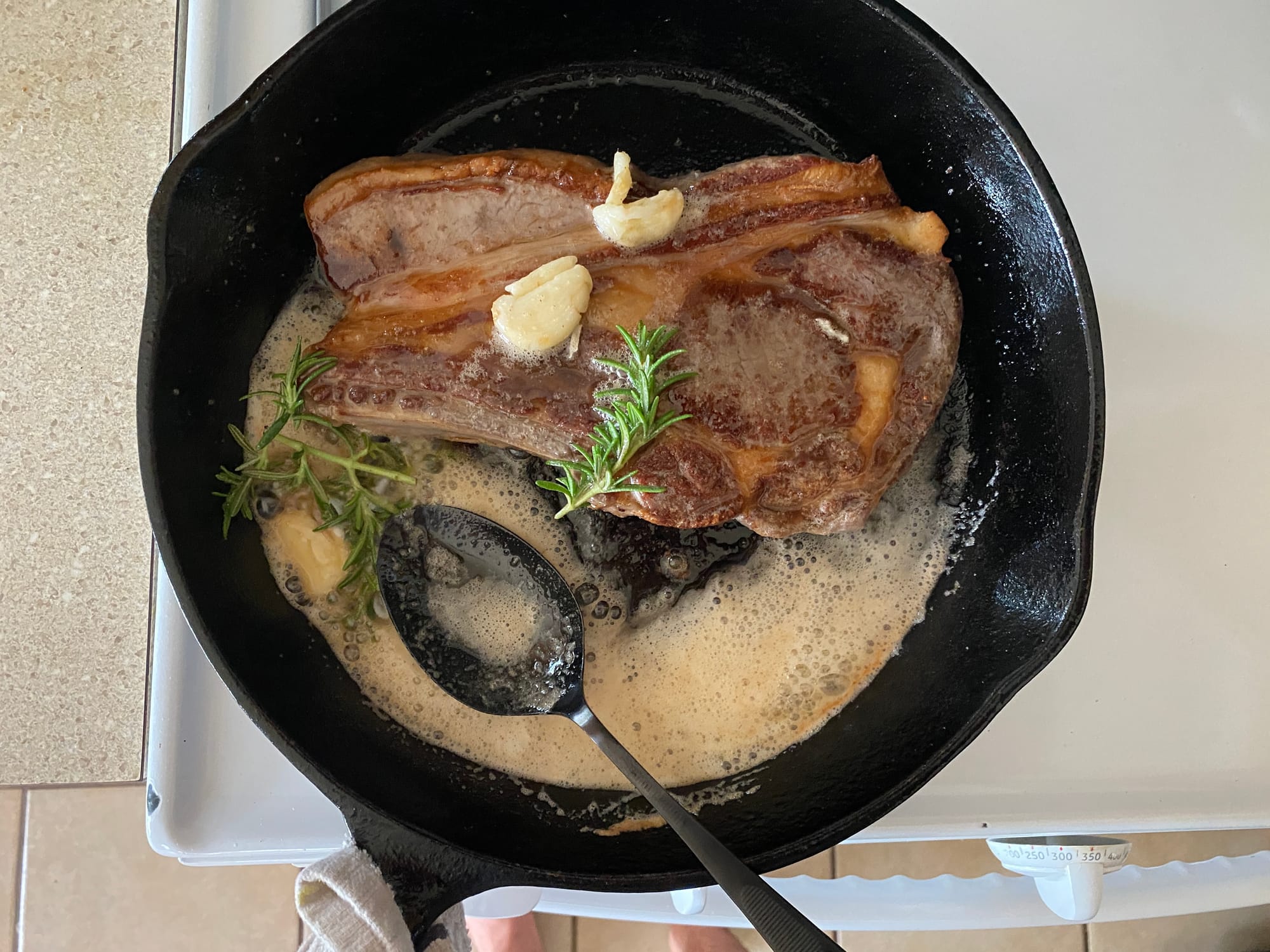
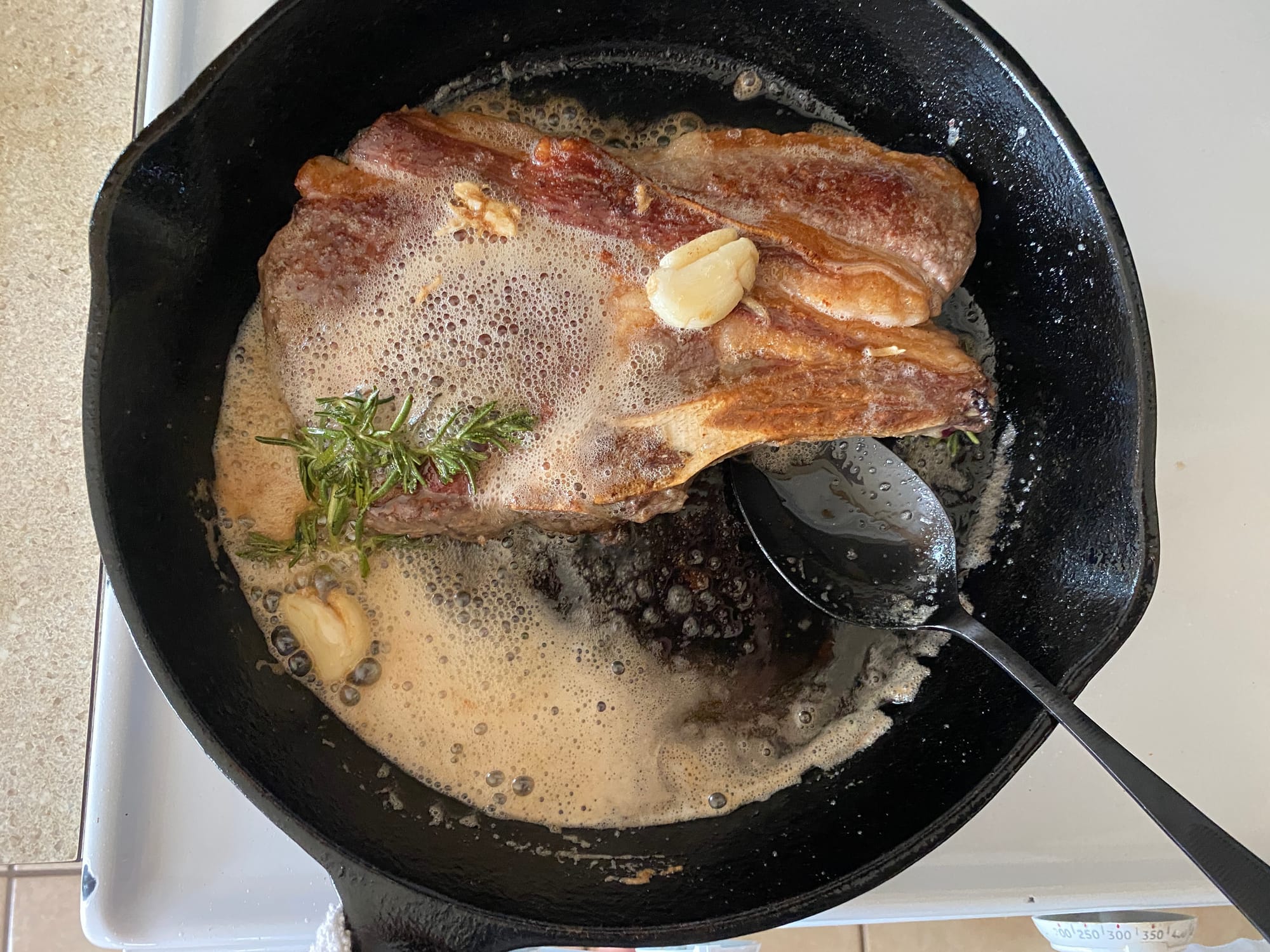
Continue this process until you've reached your desired temperature.
If you know this by touch, great! If not, just use a meat thermometer (I recommend the Thermapen).
Your steak will continue to heat up by a few degrees during the resting process, so plan to pull it off the pan at the following temperatures:
- Medium: 135°F
- Medium-rare (recommended): 125°F
- Rare: 120°F
Finally, you should rest your steak for 5-10 minutes before eating it. This will make a big difference with both flavor and texture.
Place the steak on a cutting board (you can even cover it loosely with a foil tent) and allow it to rest before cutting.
Slice the steak against the grain and serve immediately.
